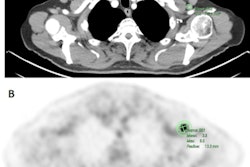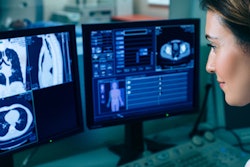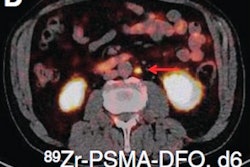Dear Molecular Imaging Insider,
For a while now, researchers have noted that COVID-19 vaccines could manifest on imaging in ways that mimic disease. Particularly confounding was that abnormal F-18 FDG radiotracer uptake looked like malignant cancer in ipsilateral axillary lymph nodes in vaccinated women undergoing PET/CT scans for breast cancer.
Discriminating between the two may be virtually impossible using standard qualitative and quantitative clinical variables. However, a group in Israel has been keenly interested in this issue and recently developed an approach they suggest might help: F-18 FDG-PET/CT radiomics with machine learning.
The team developed a machine learning model trained on PET/CT features that can differentiate metastatic breast cancer lymph nodes from look-alikes caused by COVID-19 vaccines. Get the full story in today's article.
Recognizing that radiomics can be a challenging subject to comprehend, researchers from the Gustave Roussy Institute in Paris have explained in simple terms the concept behind radiomics and how to validate a biomarker.
Nuclear medicine physicians have also been busy developing other tools for managing COVID-19 patients. A team at Marseille University Hospital in France recently offered a metabolic pattern on brain PET images that indicates the presence of long COVID-19.
Meanwhile, developments in radiotracer research appear promising in efforts to diagnose aortic wall injuries and prostate cancer, as we discussed in the following articles:
- A Scottish group found PET imaging with F-18 sodium fluoride can detect activity related to tears in the outer wall of the aorta and can help manage patients with acute aortic syndrome.
- German researchers from University Hospital of Cologne found that a zirconium-89-based PET radiotracer can detect tumors missed by existing tracers in prostate cancer patients whose cancer has returned after surgery or radiotherapy.
ECR 2022 Overture took place last month, and we covered some important molecular imaging sessions:
- A European research project called Hypmed aims to develop a more cost-effective version of PET/MRI technology to better diagnose breast cancer, according to researchers from Aachen, Germany.
- Greater collaboration between the imaging community and industry is needed in the fight to achieve sustainability, as was discussed during a roundtable session on the "Green Radiology Department."
- ESR President Prof. Dr. Regina Beets-Tan told virtual attendees at the opening ceremony that the global radiology community must stand close and be united now more than ever.
In this letter, we've highlighted only a few of the reports posted in the Molecular Imaging Community. For the full list, see the lineup below.




















